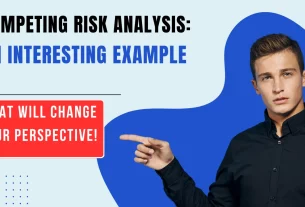What is competing risk ? It is a statistical concept primarily used in the analysis of time-to-event data, particularly relevant in fields like epidemiology, reliability engineering, finance, and many areas of social science research. It arises in situations where individuals or entities under study are exposed to several different types of events.
What is competing risk
As introduced, our subject involves events which could prevent the occurrence or alter the probability of occurrence of the event of interest. To understand what is competing risk, one must first grasp the basics of time-to-event analysis, often referred to as survival analysis.
In this field, the primary interest is in studying the time until an event of interest occurs. However, in real-world scenarios, the event of interest may not occur due to the occurrence of a different, competing event. These competing events effectively alter the risk landscape by precluding the occurrence or altering the probability of the primary event.
As an example to understand what is competing risk, consider a clinical study assessing the effectiveness of a new drug in prolonging the life of cancer patients. The event of interest is death due to cancer. However, patients may also die from other causes not related to cancer, such as heart disease or accidents. This helps understanding what is competing risk.
In our example, these other causes of death are competing risks because their occurrence prevents the event of interest from happening, which is cancer death. In the absence of competing risks, traditional survival analysis techniques like the Kaplan-Meier estimator are typically employed to estimate survival functions.
However, these methods assume that censoring is non-informative, meaning that the reason for censoring, which is not observing the event of interest, is unrelated to the likelihood of the event occurring. This assumption is violated in the presence of competing risks, as the occurrence of one type of event is inherently informative about the non-occurrence of another.
To address these challenges, specialized statistical methods are used in the presence of competing risks. One common approach is the use of cause-specific hazard functions, which model the hazard rate for each type of event separately. Another one, the cumulative incidence function, estimates the probability of experiencing the event of interest with competing risks.
This method takes into account the fact that the risk set decreases not only due to the occurrence of the event of interest but also due to competing events. Competing risk analysis is crucial in many practical applications. In medical research, it provides a more accurate picture of the risks patients face and can inform treatment decisions.
What is competing risk in reliability engineering ? The answer is it helps in understanding the different failure modes of a system and in devising strategies to improve overall reliability. In finance, competing risks can model various reasons for the termination of a financial agreement, such as default, prepayment, or restructuring.
An important aspect of competing risk analysis is the interpretation of results. While the cause-specific hazard function can provide insights into the risk associated with each cause, it does not directly offer a probability interpretation of the time to the event of interest.
The cumulative incidence function, on the other hand, gives the probability of experiencing the event of interest over time in the presence of competing risks. What is competing risk analysis in public policy and decision-making ? In the context of public health, for example, understanding competing risks can help policymakers balance risks and benefits of different interventions.
In environmental policy, it can guide the allocation of resources to address various environmental threats. Ultimately, what is competing risk ? It is a sophisticated concept in time-to-event analysis that accounts for the complexity of real-world scenarios where multiple potential events can occur. Its proper understanding and application are crucial.
Competing risk requires specialized statistical tools and careful interpretation. By taking into account the full spectrum of risks, this analysis provides a more nuanced and accurate understanding of the probabilities and timelines of various events, leading to more informed decision-making in a wide range of disciplines.






